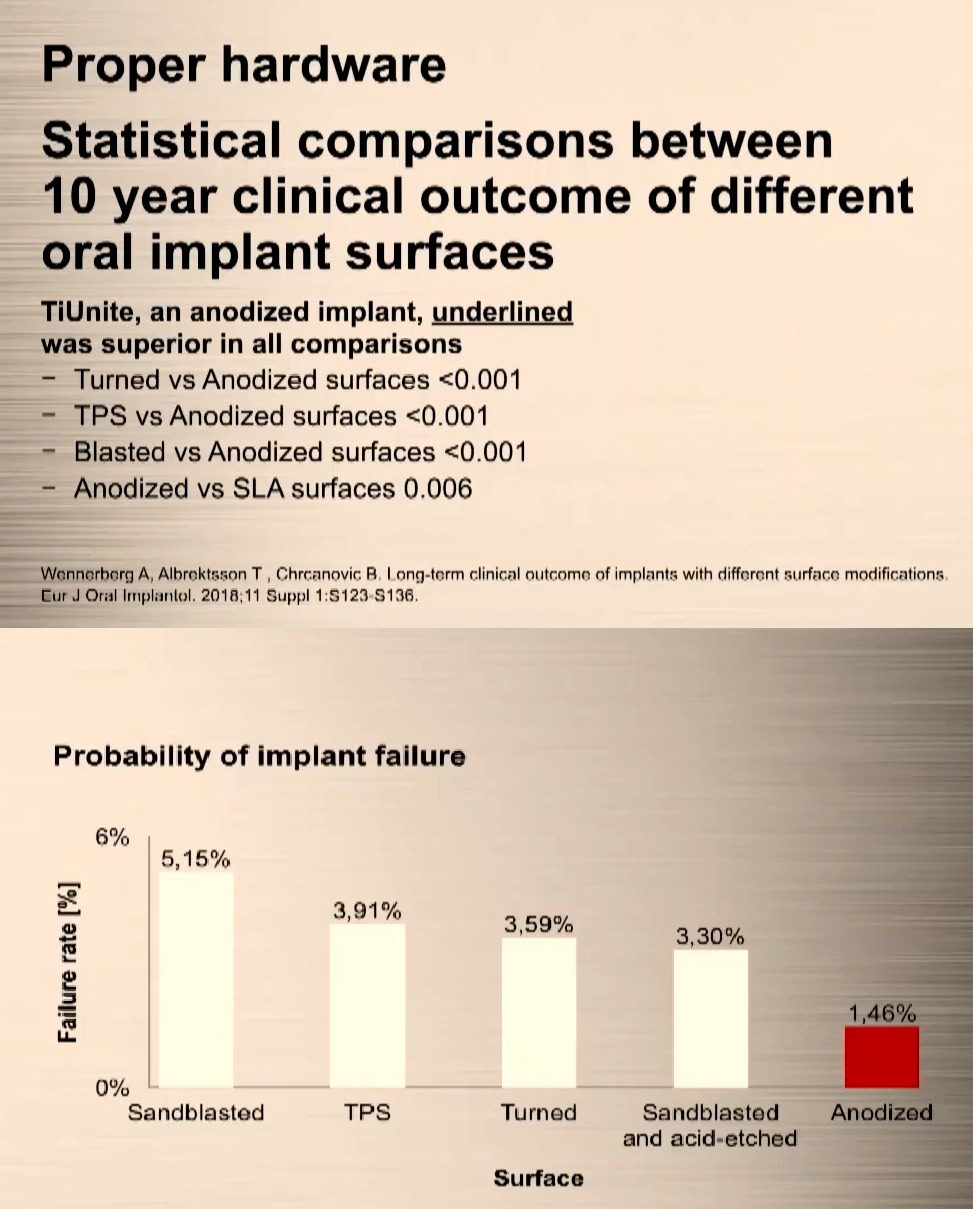Long-term clinical outcome of implants with different surface modifications.
Link: http://nobelbiocare.md/download/TiUniteWennerberg,Albrektsson2018ENG.pdf
https://www.nobelbiocare.com/blog/news/spotlight-on-surface-innovation-video-presentation/
- Ann Wennerberg, Tomas Albrektsson, Bruno Ramos Chrcanovic
- Published in European journal of oral 2018 Medicine
Abstract:
The aim of the present systematic review was to evaluate reported survival rate and marginal bone (MBL) loss of implants with different surface roughness and followed up for 10 years or longer. For the majority of the 62 included clinical studies, no direct comparison between different surfaces was made, thus our report is mainly based on reported survival rates and marginal bone loss for individual implant brands with known surface roughness. The survival rate was 82.9 to 100% for all implants after 10 or more years in function and the marginal bone loss was, on average, less than 2.0 mm for all implant surfaces included, i.e. turned, titanium plasma sprayed (TPS), blasted, anodised, blasted and acid-etched but the turned surface in general demonstrated the smallest MBL. However, the survival rates were in general higher for moderately rough surfaces. The roughest TPS surface demonstrated the highest probability for failure, while the anodised showed the lowest probability. In conclusion, the present systematic review demonstrates that it is possible to achieve very good long-term results with all types of included surfaces.


